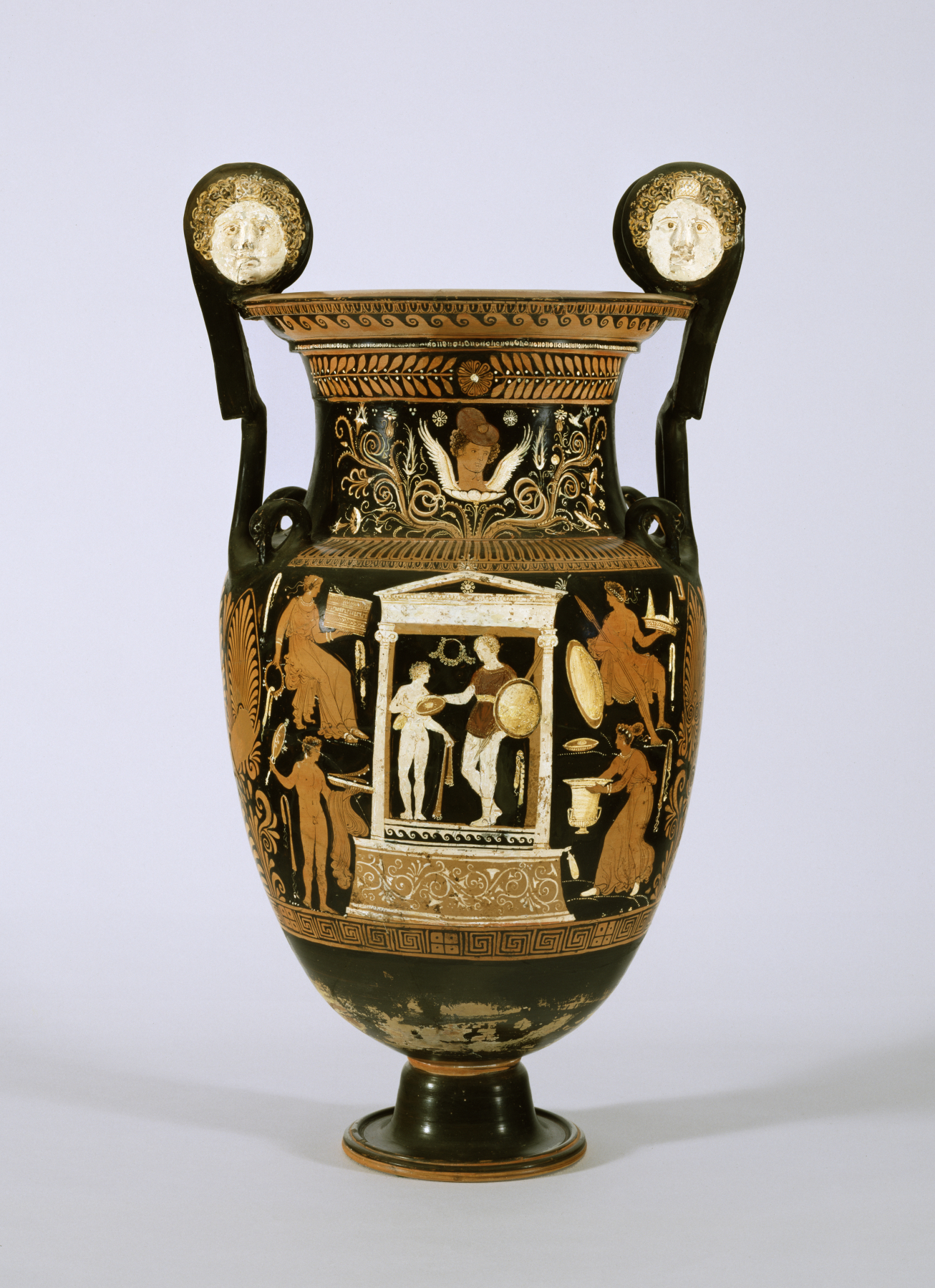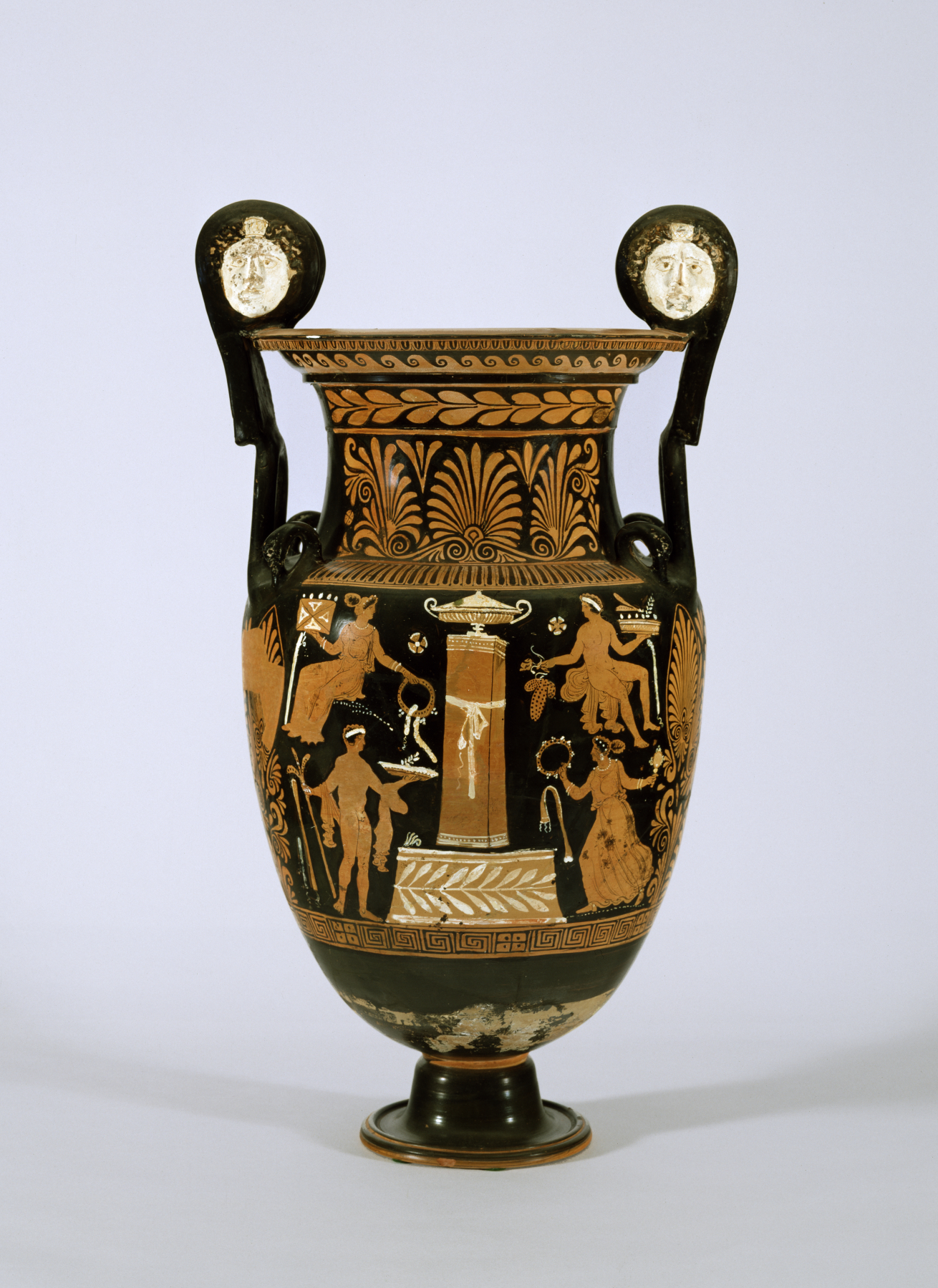Volute Krater for a Deceased Warrior
(Ancient Greece )
The body of this volute krater is dominated by the depiction of a naiskos (shrine) that contains the white painted figure of a deceased warrior with spear and shield waiting for his young servant to pour a libation in the phiale (shallow bowl). Gazing in at the warrior from outside the naiskos are four red figures that sit or stand on rocky ground indicated with thin white lines. These men and women carry such items as a wreath, cista (cylindrical container), mirror, phiale, bell krater, spear, and shield, all offerings for the deceased. Above, the bust of a winged male wearing a petasos (wide-brimmed hat) appears on the neck of the vase among the curling tendrils of the acanthus plant. The attachment of the handles to the body is accented with sculpted necks and heads of swans, and the center of the volutes shows white-face female masks rather than the characteristic scroll. The opposite side shows a similar arrangement of four male and female offering bearers, but at center stands a large grave stele tied with a white fillet. While the figures bear some of the same objects as the other side, the two men are shown holding grapes and a thyrsus (fennel stalk), symbols of fertility. This "krater" has been attributed to a well-known painter named after a vase in Copenhagen (inv. no. 4223).
Kraters are large, wide-mouthed vessels commonly used for mixing water and wine, although they also served a funerary function, either placed in a tomb or used as grave markers. Volute kraters are a specific type of krater named for the spiraling, volute (scroll-like) shape of the handles. While volute kraters are found across the Greek world as early as the 6th century BCE, the form becomes the most characteristic vessel type painted by Greek colonists in Apulia (Magna Grecia). Between the mid-5th and end of the 4th centuries BCE, Apulian vase painting reaches its height, producing vessels of monumental size (ranging from approximately 30cm to over 1.5 meters) covered in elaborate decoration. Apulian painters display their skill by depicting intricate figurative and ornamental details across complex compositions, through their use of foreshortening (the technique of drawing objects so they appear to recede into space) when painting architectural structures, and by adding colors such as white and yellow to their red-figure works.
Provenance
Provenance (from the French provenir, 'to come from/forth') is the chronology of the ownership, custody, or location of a historical object. Learn more about provenance at the Walters.
Sale, Sotheby’s, London, May 20, 1985, no. 384; Marilyn and Herbert Scher, Pikesville, MD, 1985, by purchase; Walters Art Museum, 2003, by gift.
Geographies
Italy, Apulia (Place of Origin)
Measurements
H: 30 3/4 x W: 17 3/4 in. (78.11 x 45.09 cm)
Credit Line
Gift of Marilyn and Herbert Scher, 2003
Location in Museum
Accession Number
In libraries, galleries, museums, and archives, an accession number is a unique identifier assigned to each object in the collection.
In libraries, galleries, museums, and archives, an accession number is a unique identifier assigned to each object in the collection.
48.2759




